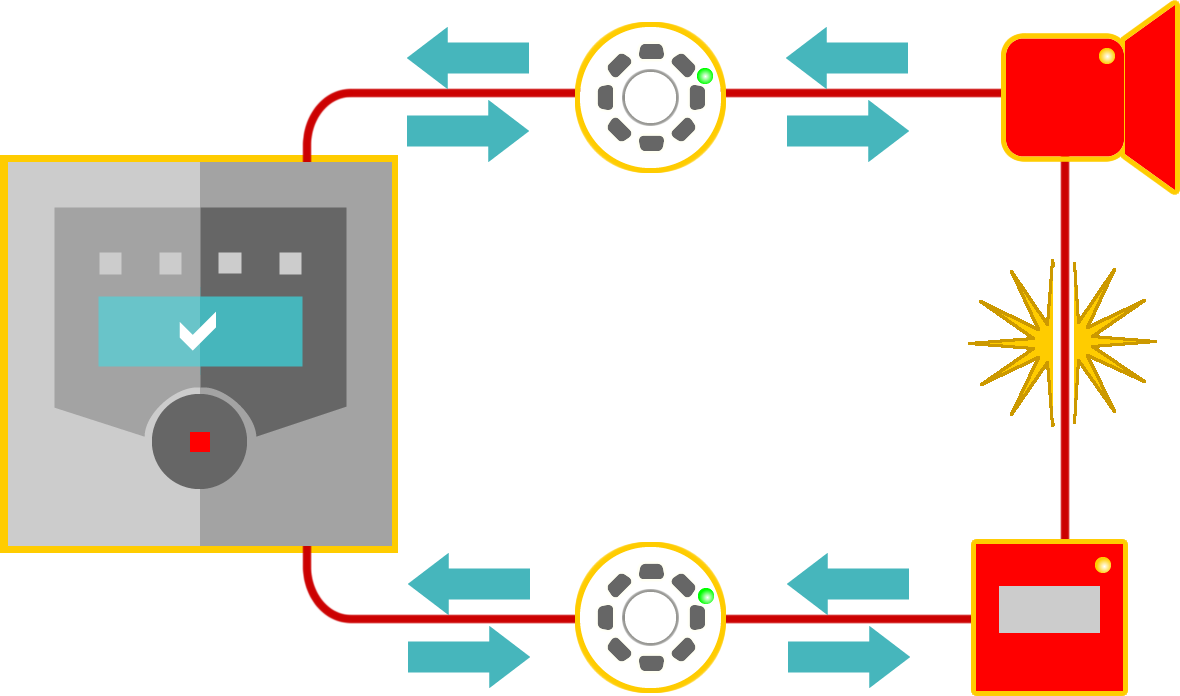Products with SCIs have been gradually introduced into most manufacturer’s addressable fire detection products over the last few years to cater for the legislative requirements of some specific markets and regions, and to give extra flexibility when designing and installing fire detection systems.
Hochiki’s ESP addressable range supports a whole family of SCI-enabled devices.


On a healthy addressable fire system, the voltage from the fire control panel is driven one way around the loop, both powering devices and carrying data. But if a fire loop cable isidentally damaged by tools or other equipment, particularly if not mechanically protected by conduit, and the result of that damage is that the positive and negative conductors within the cable come into contact with each other, that vital voltage level drops. This is a short-circuit and at this point this entire loop is instantly out of action, which of course puts the whole building and its occupants at risk.
Short-circuit isolators recognise the voltage drop and when they activate, they divert the loop voltage back along one of the conductors, maintaining the flow of power and data for the rest of the loop.
At the same time, because it is programmed to recognise when it’s no longer receiving a return loop drive voltage, the fire control panel will automatically switch to driving voltage from both ends of the loop, using both conductors.
In BS 5839 it is recommended that an isolator is only required once in every zone – and that a zone can be anything up to 2000 square meters. In other words, it’s acceptable to lose a whole zone due to a short-circuit on the loop.
Whereas in some regions, the local standards might prescribe that at every device type change on the loop, you need to install an SCI. This is the case for Germany for example, as dictated in their BS 5839 equivalent, the “DIN VDE 0833-2”.
Enquire now
To contact us please fill out the form below